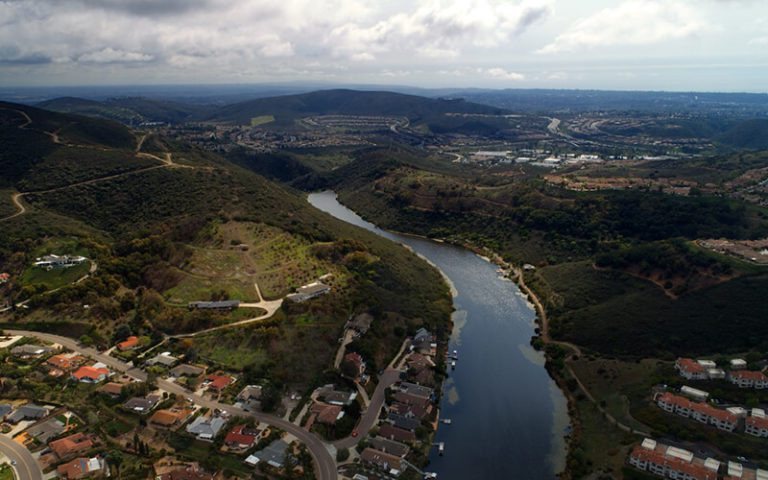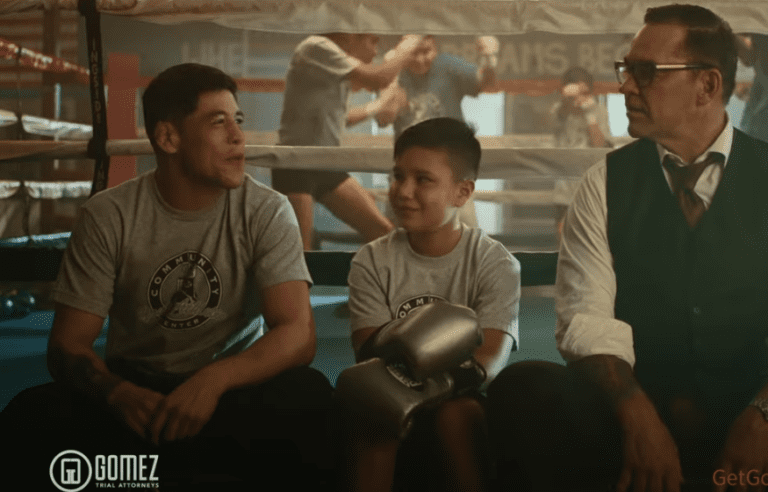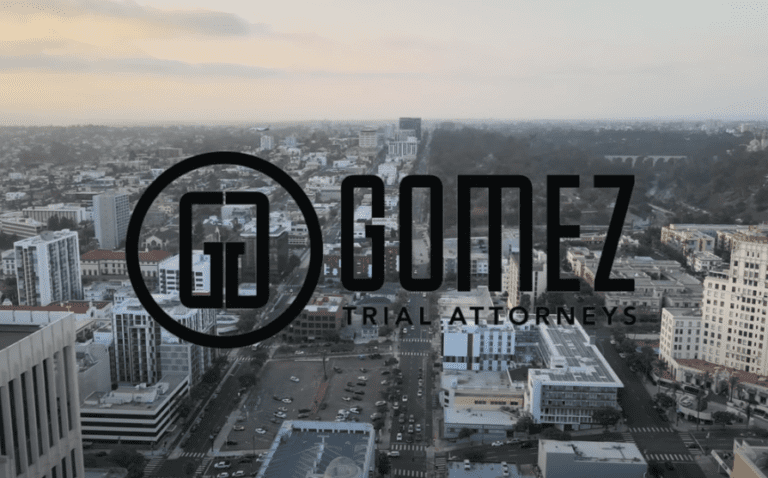Any motor vehicle accident can cause catastrophic or fatal injuries. However, few crashes can match the extreme and deadly forces of a truck T-boning a car. You would be lucky to survive a T-bone truck accident, although that does not mean that anyone feels lucky after getting injured in one. More often than not, a truck slamming head-on into the side of a car will inflict injuries that lead to massive physical, emotional, and financial pain.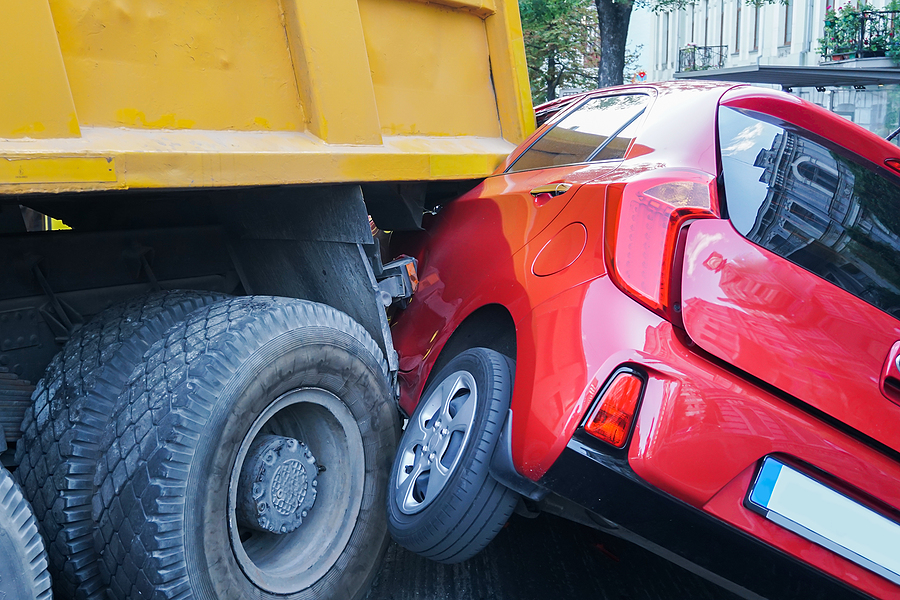
This article takes a deep dive into the topic of T-bone truck accidents. We explore how they happen, who may bear the blame for them, the injuries they commonly inflict, and how lawyers represent victims of them in legal actions seeking compensation for their injuries and losses.
If a truck accident, T-bone or otherwise, has caused devastation in your life or the life of a loved one, you may have the right to recover substantial compensation.
Basic Mechanics of T-Bone Truck Accidents
For those unfamiliar with the mechanics of a T-bone accident, let’s review the basics.
A T-bone accident (also sometimes referred to as an “angular collision”) happens when the front end of one vehicle collides with the side of another, forming the shape of the letter “T.” It can happen anywhere vehicles enter or cross a road at a right angle, or whenever road conditions create a risk of vehicles losing control and ending-up perpendicular to the flow of traffic.
Most commonly, T-bone crashes happen at intersections. Perhaps the most dangerous intersections for T-bone accidents are those that have no stop signs or traffic lights in at least one direction. In fact, road engineers spend significant time designing intersections and evaluating the appropriate traffic control measures for them specifically to reduce the risk of T-bone accidents. (The popularity of rotaries or roundabouts as replacements for intersections comes, in part, from how much they lower the risk of deadly T-bone crashes.)
The distinguishing characteristic of T-bone truck accidents from all other T-bone crashes is, by and large, the huge amount of force involved that makes them particularly violent and dangerous. Basic physics tells us that force equals mass times acceleration. A truck has significant mass, often many times that of an ordinary passenger vehicle. If it crashes headlong into the side of a car, suddenly pushing the car sideways, this large mass amplifies the force of the sideways acceleration the car and the people inside it experience.
If, conversely, a car crashes head-first into the side of a truck, the truck’s mass will often amount to the car hitting a cement wall, which translates into the car and the bodies of the occupants inside it absorbing the entire force of the collision. Finally, occasionally, the collision may lead to the car riding under the truck, which involves more complicated, but no less deadly, forces.
Causes of T-Bone Truck Accidents
Now that we know what a T-bone truck accident is, let’s look at some of their common causes.
To begin, at the risk of pointing out the obvious, T-bone truck accidents should not happen. When they do, the cause almost always has something to do with a human error. Oftentimes, a driver of one of the vehicles commits that error. Sometimes, however, some other poor decision or dangerous action by someone in the days, weeks, months, or even years, leading up to the T-bone collision, contributes to the cause of the crash. In our experience as lawyers for truck accident victims, it is extremely rare for a T-bone truck crash to happen in which there is nothing anyone could have done to prevent it.
To understand why, it helps to appreciate this basic fact: navigating an intersection or any other traffic pattern in which one vehicle could cross the path of another is one of the riskiest scenarios drivers face, particularly when at least one of the two vehicles is a truck.
To stay safe, a driver must mentally absorb and process numerous pieces of information, including:
- The presence or absence of stop signs, traffic lights, or other traffic control measures;
- The presence or absence of vehicles in the driver’s travel lane;
- The presence or absence of vehicles in the crossing travel lane;
- The speed and position of the driver’s vehicle and vehicles in either lane;
- Brake lights, blinkers, or other indications of the intentions of the drivers of those vehicles;
- The presence or absence of pedestrians in the or near the roadway;
- The condition of the road surface; and
- Visual obstructions or impairments that prevent observing any of the above, and how to respond to them.
Drivers must recognize and respond to each piece of information in seconds or less. While they do so, they must also control their vehicle, signal (when appropriate) a turn, and obey the rules of the road. If just one thing goes wrong in this complex set of tasks, if a driver misses, misunderstands, or lacks just one piece of essential information, then a T-bone accident with a truck can easily happen.
Driver Distraction
Drivers of all vehicle types navigate intersections every day, often multiple times in a single trip. Most often, they do it safely and without much thought. Unfortunately, that also means they can sometimes take their safety for granted and let their attention wander, with potentially disastrous results.
A driving distraction, broadly speaking, consists of anything that takes a driver’s hands from the wheel (a physical distraction), eyes from the road ahead (a visual distraction), or mind from the task of driving safely (a cognitive distraction). In this day and age, using a smartphone (to text, scroll social media, etc.) constitutes the most common and potentially dangerous form of driver distraction, because it combines all three forms of distraction in a single action.
Drivers who make the foolish mistake of thinking they can drive and text simultaneously (they can’t, as proven by research) risk getting into deadly T-bone accidents.
However, other distractions behind the wheel can also lead to a truck-on-car T-bone accident. These include: eating food, putting on make-up, tuning a radio, talking to passengers, and paying attention to a sight or sound outside the vehicle. Any distraction at all can divert a driver’s attention just long enough for the driver to ignore a red light or fail to stop in time to avoid a collision.
Distractions and other sources of inattention pose a particular danger for truck drivers. It takes special skill and attention to detail to operate a large truck safely. Even more-so than drivers of passenger vehicles, truckers who suffer a lapse of attention because of a distraction risk losing track of an important bit of information—like the location of a vehicle in the truck’s blind spot, or traffic conditions at an upcoming intersection—that they need to know to avoid a deadly T-bone collision.
Truck Driver Fatigue
Truckers also routinely struggle against fatigue that dulls their reactions and situational awareness. Research shows that fatigue can have the same impairing effects on a driver’s abilities as intoxication, and can cause accidents with similar frequency. In fact, fatigue is so common among drivers (official estimates put the number of adults who get inadequate sleep at roughly one-in-three nationwide) that it likely goes significantly underreported as a contributing factor in deadly T-bone accidents.
That same research shows that truckers face particular dangers and risks from fatigue, because of a variety of factors unique to their jobs and demographics:
- Truckers work long hours and irregular schedules, which results in inadequate and poor-quality sleep. State and federal regulations seek to limit the number of hours drivers can spend on the road, but even when drivers comply with those regulations (which does not always happen), poor sleep quality can leave them feeling over-tired;
- Truckers work on tight deadlines, which gives them an incentive to drive even when excessively fatigued, even if they follow regulations governing their hours-of-service (which, as we said does not always happen);
- Truckers, as a group, are older and in poorer health than the working population as a whole, making them more susceptible to getting tired after a long day, to having health conditions that cause fatigue. They are also more likely than the average driver to take medication that has drowsiness as a potentially dangerous side effect;
- Long-haul truckers, in particular, often drive in the late night or early morning, during hours when their bodies’ circadian (sleep) rhythms make them drowsy, making them more likely to use legal and illegal stimulants that can impair their driving or give them a false sense of alertness;
- Long-haul trucking is also a monotonous job, frequently involving long hours driving on seemingly endless ribbons of highway, which can lull a driver into drowsiness; and
- Driving a truck safely requires far more situational awareness, skill, and attention to detail than driving a passenger vehicle.
The combination of these factors makes a truck driver someone who runs an especially high risk of making a mistake that causes a T-bone accident at an intersection or other road crossing. Passenger car occupants tend to suffer the worst in those collisions.
Unsafe Speed and Other Aggressive Driving
Drivers—especially truckers—who take unnecessary risks can easily end up causing a T-bone truck accident. Speed plays an outsized role in many T-bone collisions between cars and trucks. So do a variety of related aggressive driving behaviors, such as trying to beat a yellow traffic light before it turns red, failing to yield to oncoming traffic, and illegal or dangerous passing.
Unsafe speeds and other aggressive conduct behind the wheel risks driving a vehicle into a crossing travel lane too late for vehicles in that lane to stop or avoid a collision. Speed, especially, puts drivers and passengers in danger because a T-bone crash at high speed can cause devastating damage and injuries. A speeding truck poses the greatest danger of all, because a speeding truck typically needs a far greater distance to come to stop than a passenger vehicle. Moreover, a speeding truck inflicts massive damage to a smaller vehicle in a collision.
Visual Obstructions
To enter and cross a travel lane safely, the driver of a vehicle needs to see approaching vehicles in that lane. Visual obstructions prevent that from happening.
Dangerous visual obstructions can include:
- Overhanging tree branches;
- Shrubs, hedges, and other landscape features;
- Billboards;
- Buildings;
- Floodlights or other bright lights;
- Cars and trucks, especially large ones executing a turn;
- Road features that limit line-of-sight, such as sharp curves, dips, or hills; and
- Inadequate or confusing lane markings.
A driver who pulls into a crossing travel lane, despite a visual obstruction, risks causing a T-bone accident.
Equipment Malfunctions
We depend on a range of electronic and mechanical equipment to work as intended to keep us safe on the road. Failure of that equipment can send a car or truck into a crossing travel lane by mistake, risking a deadly T-bone accident.
Two broad categories of equipment that, when they malfunction, commonly cause T-bone crashes are:
- Motor vehicle equipment. To enter or cross a travel lane safely, a vehicle needs working brakes, tires, windshield wipers, headlights, and so on. The failure of that equipment and the wrong moment can cause a driver to lose control or visibility, resulting in a T-bone crash. Large trucks, in particular, tend to suffer a significant amount of wear-and-tear. Truckers and truck owners have a legal obligation to inspect and maintain their vehicles to ensure they remain in a roadworthy condition.
- Traffic control equipment. Drivers also deserve to trust that traffic signs and signals will function as intended. T-bone accidents can happen when a traffic signal stops working, a stop sign blows down, or a road crew makes mistakes in marking or diverting travel lanes. For the most part, local governments have the legal obligation to ensure that traffic control measures stay in working order.
Common Injuries in T-bone Truck Accidents
Unfortunately, the extreme violence of a T-bone collision between a truck and a smaller vehicle often causes fatal injuries for the occupants of the smaller vehicle. According to statistics published by the National Highway Transportation and Safety Administration (NHTSA), T-bone (or angle) crashes annually account for nearly half of all fatal vehicle-on-vehicle collisions. In the vast majority of those accidents, the person(s) killed are occupants of passenger vehicles, especially when their vehicle collides with a truck.
Drivers and passengers who survive car-on-truck T-bone accidents, particularly those in the smaller vehicle, often suffer catastrophic, life-altering injuries, including one or more of the following:
Traumatic Brain Injuries (TBIs)
In a T-bone truck accident, the occupants of either vehicle—but especially those in the vehicle struck broadside—inevitably suffer violent blows or jolts to their heads. In a high percentage of these cases, the bump, blow, or jolt causes the victim’s brains to shift, deform, or twist within their skulls. Sometimes, the blow is so severe that it causes a skull fracture or a penetrating injury. Regardless, the sudden trauma leads to tearing, bruising, swelling, and bleeding in the brain that disrupts the brain’s normal functions. We call this a traumatic brain injury, or TBI.
A TBI can cause a wide range of serious health complications. Depending upon the portion of the brain affected, a victim may suffer long-lasting cognitive, motor, or emotional impairments. Severe brain injuries can cause permanent loss of consciousness or a state of semi-consciousness, paralysis, and/or profound changes in personality or cognition.
Even so-called “mild” TBIs (also known as concussions) can cause T-bone truck accident victims to struggle with a wide range of debilitating symptoms, including chronic headaches, brain fog, fine motor impairment, memory loss, fatigue, and sensitivity to light and sound (among others).
Spinal Cord Injuries (SCIs)
The same violent, sideways jolt that can cause TBIs in occupants of the vehicle struck on its side can also inflict severe damage to a T-bone truck accident victim’s spine. Oftentimes, the initial impact twists and contorts a victim’s body in a way that damages the spinal column. This damage, in turn, can often cause harm to the delicate bundle of nerves running the length of the spinal column, known as the spinal cord, which carries messages from the brain to the body.
A tear or nick in the cord, and even pressure on it from damage to the spinal column, can disrupt those messages. This is what we refer to as a spinal cord injury, or SCI.
A spinal cord injury commonly results in paralysis and a loss of sensation below the site of the injury on the spinal cord. Victims of SCI rarely recover full function of the parts of the body affected. Many will need to rely on wheelchairs to get around for the rest of their lives. All face potentially staggering expenses, life-disruption, and long-lasting health complications due to their injuries.
Loss of a Limb
T-bone truck accidents regularly result in the smaller vehicle getting crushed or severely damaged. The extreme force of the impact can flatten or deform the frame of even the stoutest passenger vehicles, collapsing the cabin around the driver and passengers. Oftentimes, this damage pins, crushes, or even severs a crash victim’s limb, causing injuries to bone, muscle, and blood vessels so severe that doctors cannot save the limb (or, if they can, the limb loses a significant amount of its function).
Losing a limb causes profound physical and emotional pain for a T-bone truck crash victim. The injury may leave the victim confined to a wheelchair or reliant on a prosthetic device. Adapting to life without a limb puts the victim under severe strain. Expenses can run into the hundreds of thousands of dollars (or more).
Organ Damage
The violent jolting and twisting of a T-bone truck accident also put occupants of the smaller vehicle, in particular, at risk for suffering damage to their vital organs like the liver, spleen, or lungs. If not addressed quickly, some of this damage can prove fatal. If emergency medical care addresses the life-threatening aspects of organ damage, however, it may still not save the victim from a lifetime of significant, potentially life-shortening, health complications.
Orthopedic Injuries, Broken Bones, and Soft Tissue Injuries
In virtually all truck T-bone crashes, occupants of the smaller vehicle will, at a minimum, suffer painful broken bones, joint dislocations, muscle tears, and damage to ligaments and tendons. These injuries may heal in time with proper medical care and physical therapy, but they can still leave accident victims suffering from chronic pain and disability that limits their capacity to enjoy life and hold down a job.
Compensation for T-Bone Truck Accident Victims
As we’ve said, a T-bone truck accident simply should not happen. When it does, it is often because someone other than the injured crash victim made a poor decision or engaged in a dangerous action, that contributed to the cause of the crash. In those cases, the victims have the right to take legal action seeking compensation for their injuries and losses. Let’s take a look at whom they may have the right to pursue, and the kinds of damages they can often seek.
Legal Liability for a T-Bone Truck Accident
To illustrate the range of parties who may have a legal liability to victims in a T-bone truck accident, picture a crash in which a truck runs a red light and collides with the side of a car in the middle of an intersection. It may seem obvious that the truck driver should face legal liability for the crash. Maybe that’s true. However, experienced lawyers for T-bone truck accident victims know to look past the obvious to identify the full range of parties who have potential liability.
In the type of T-bone truck accident described above, that range may include:
- The truck driver, if the driver’s unreasonably dangerous conduct behind the wheel caused the crash, such as if the trucker drove while excessively fatigued, or sped up to try to beat a yellow light before it turned red;
- The truck driver’s employer, who may have a legal obligation to answer for the trucker’s actions under state law, especially if the employer failed to train in safe driving practices, or knew about a driver’s reputation for dangerous behavior at the wheel;
- The owner of the truck or its cargo, such as if a mechanical problem with the truck that the owner should have fixed contributed to the cause of the crash, or if the cargo shifted dangerously and led to a loss of control;
- The manufacturer of either vehicle, if a mechanical failure of a defective part on either one contributed to the T-bone crash, such as if the truck’s brakes failed when the trucker tried to slow down for a red light; or
- The local government where the crash occurred, if its failure to design, build, or maintain a safe intersection played a role in the collision occurring, such as if officials knew a traffic light had a dangerous malfunction that caused it to switch from green to red unpredictably.
This is just a sampling of the parties who may have legal liability for a T-bone truck crash. The best way to determine which parties may face legal liability to you for injuries you suffered in a T-bone accident with a truck is to speak with an experienced truck accident injury lawyer.
Types of Damages for T-Bone Truck Accident Injuries
Victims of T-bone truck collisions sustain severe injuries that cause them extreme physical, emotional, and financial pain. They deserve compensation for those injuries from any party whose careless or reckless actions caused them harm. Often, they can secure that compensation through legal action.
Every lawsuit seeking damages for a T-bone truck accident has unique characteristics.
However, in general, victims of injuries in T-bone truck crashes can seek compensation for:
- Medical expenses related to treating their injuries and any related health conditions now and in the future, such as the costs of emergency care, doctor appointments, surgeries, therapy sessions, hospitalizations, long-term care stays, medication, and medical equipment.
- Other expenses the victim would not have experienced except for the T-bone truck accident and injuries suffered in it, such as costs associated with replacing a totaled car, paying for modifications to a home to make it wheelchair accessible, or hiring help with day-to-day needs.
- Past and future lost income attributable to the T-bone truck accident injuries, such as when they force a victim to miss work while recovering, or cause disabilities that prevent the victim from returning to work in the future;
- Pain, suffering, and diminished quality of life due to the victim’s T-bone truck accident injuries, which may include harm to personal relationships, the difficulty of adapting to disfiguring scars or disabilities, and the loss of the ability to engage in activities the victim once enjoyed.
- Sometimes, punitive damages, which courts can award in cases where the at-fault party caused the crash by engaging in extreme or outrageous conduct.
Lawyers for truck T-bone accident victims can never guarantee that their clients will actually recover the types of damages above through legal action. Nor can they promise how much money might fall into each of these categories. However, by hiring an experienced truck accident injury lawyer, victims can give themselves the strongest possible chance of recovering the maximum available compensation for their situation.
Steps to Take After a T-Bone Truck Accident
Did you or a loved one suffer injuries in a T-bone truck accident? If so, be aware that the actions you take in the aftermath of the crash can affect your legal and financial rights. Taking the steps below can help protect those rights and your overall well being.
Step One: Seek Medical Care and Follow Doctor’s Orders
The single most important thing anyone can do after getting into a T-bone truck crash is to seek immediate medical care. Oftentimes, that will mean taking a ride in an ambulance to the local hospital. However, even if you survive the accident without needing emergency medical care, we strongly urge you to seek medical attention right away.
Never simply assume you have avoided serious injury just because if you feel ok in the minutes or hours after an accident. Some life-threatening injuries, like TBI, SCI, and internal organ damage, may not show immediate symptoms, but a doctor can diagnose them and, potentially, save your life.
Seeking medical care and following your doctor’s orders helps you in at least three ways. First, it protects your health, which is the most important thing. Second, it creates a paper trail of medical records, which can serve as the primary evidence of your injury and its connection to your accident. Third, it protects you against defense lawyers and insurance companies claiming that you made your injuries worse by not getting the care you needed.
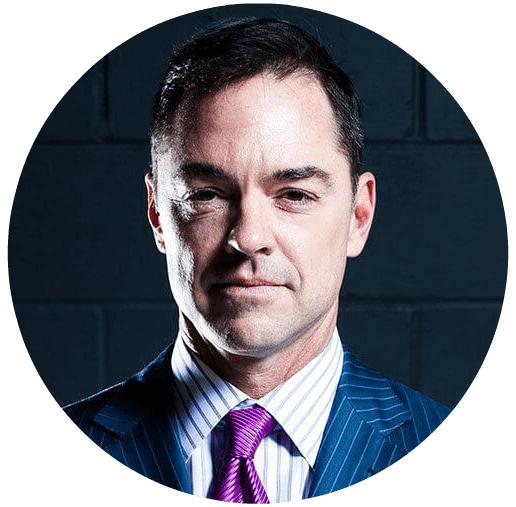
Step Two: Do Not Accept Quick Cash Settlements
T-bone truck accidents can cause massive harm. The parties legally liable for them potentially face large liability damages to crash victims. They have every motivation to try to escape that liability for as little money as possible.
One way liable parties sometimes try to do this is by offering a quick cash settlement to victims. These settlements virtually always come up far short of the money victims actually deserve, and what they will need in the future to cover their medical and other expenses. The parties with liability, and their insurance companies, offer these settlements in hopes victims will jump at seemingly easy money before they realize how much more they should receive.
Do not make that mistake. Instead, trust a lawyer to negotiate with legally liable parties and their representatives on your behalf.
Step Three: Speak an Experienced Truck Accident Injury Lawyer
Do not wait to seek legal help after a T-bone truck accident. You have potentially valuable legal rights, but you must act soon to protect them. If you wait too long, then you could lose out on the money damages you need and deserve.
Gomez Trial Attorneys
655 West Broadway, Suite 1700
San Diego, Ca 92101
619-237-3490



